Home >Technology peripherals >AI >Is the big model taking shortcuts to 'beat the rankings'? The problem of data pollution deserves attention
Is the big model taking shortcuts to 'beat the rankings'? The problem of data pollution deserves attention
- WBOYforward
- 2023-11-09 14:25:111271browse
In the first year of generative AI, everyone’s work pace has become much faster.
Especially this year, everyone is working hard to roll out large models: Recently, domestic and foreign technology giants and startups have taken turns to launch large models. As soon as the press conference started, all of them were major breakthroughs. , each company has refreshed the important Benchmark list, either ranking first or in the first tier.
After being excited about the rapid progress of technology, many people find that there seems to be something wrong: Why does everyone have a share in the top spot in the rankings? What is this mechanism?
As a result, the issue of “ranking cheating” has also begun to attract attention.
Recently, we have noticed that there are more and more discussions in WeChat Moments and Zhihu communities on the issue of "swiping the rankings" of large models. In particular, a post on Zhihu: How do you evaluate the phenomenon that the Tiangong Large Model Technical Report pointed out that many large models use data in the field to boost rankings? It aroused everyone's discussion.
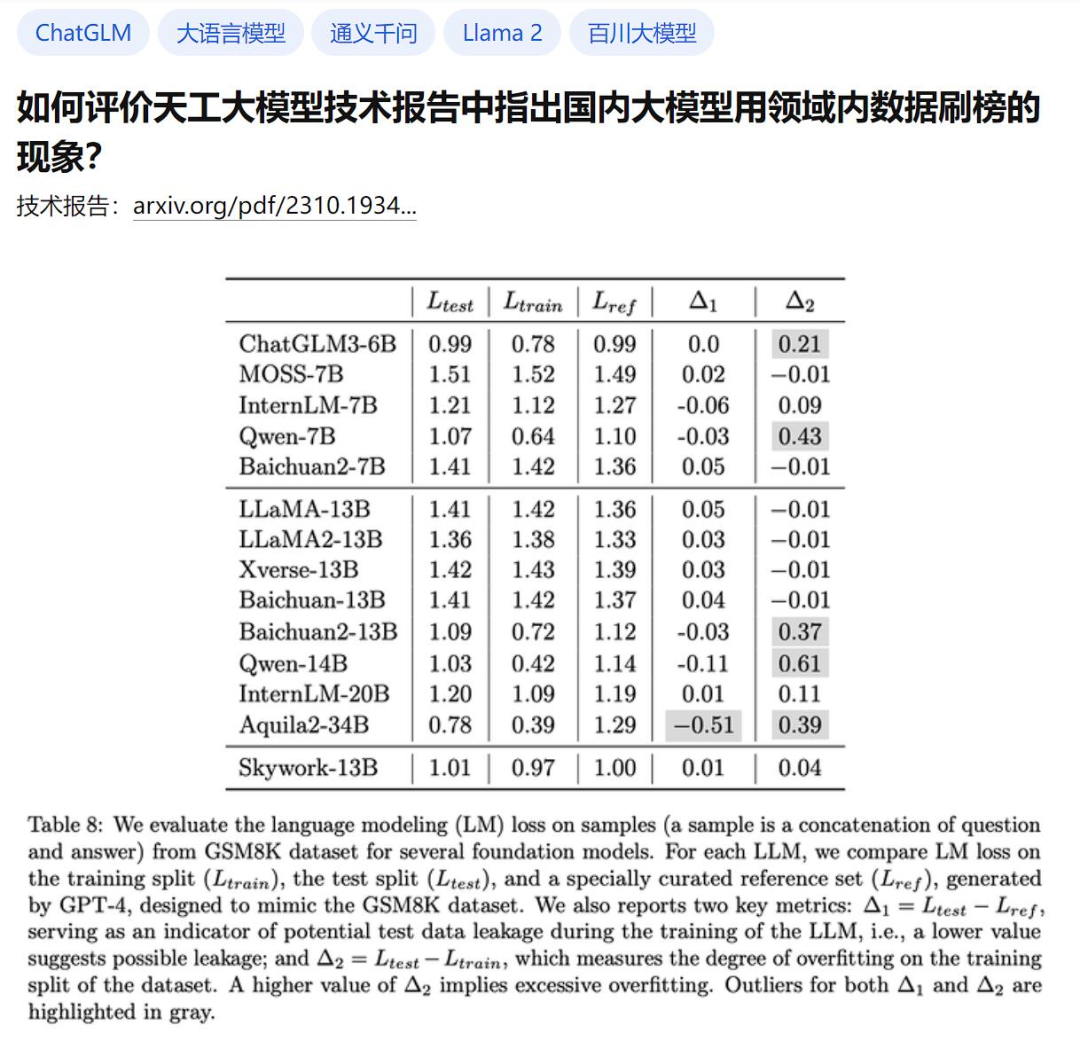
Link: https://www.zhihu.com/question/628957425
Many The large model ranking mechanism exposed
The research comes from Kunlun Wanwei’s “Tiangong” large model research team. They released a technical report in a preprint version of the paper at the end of last month. on the platform arXiv.

Paper link: https://arxiv.org/abs/2310.19341
The paper itself is Introducing Skywork-13B, which is a large language model (LLM) series of Tiangong. The authors introduce a two-stage training method using segmented corpora, targeting general training and domain-specific enhanced training respectively.
As usual with new research on large models, the authors stated that their model not only performed well on popular test benchmarks, but also achieved state-of-the-art results on many Chinese branch tasks. of-art level (the best in the industry).
The point is that the report also verified the real effects of many large models and pointed out that some other large domestic models were suspected of being opportunistic. This is Table 8:
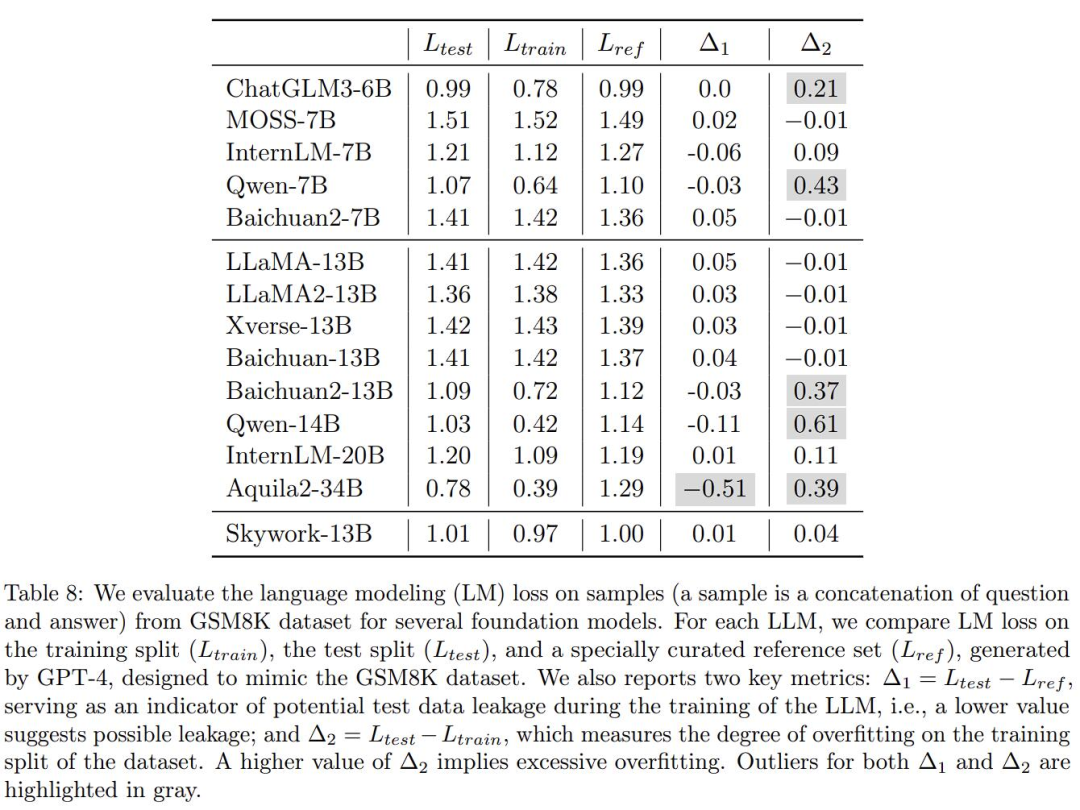
Here, the author wants to verify the mathematical applications of several common large models in the industry. Regarding the degree of overfitting on the problem benchmark GSM8K, GPT-4 was used to generate some samples that were in the same form as GSM8K. The correctness was manually checked, and these models were tested in the generated data set and the original training set and test set of GSM8K. Comparisons were made and losses were calculated. Then there are two more metrics:

Δ1 As an indicator of potential test data leakage during model training, the lower value Indicates a possible leak. Without training on the test set, the value should be zero.

Δ2 measures the degree of overfitting of the training split of the dataset. A higher Δ2 value means overfitting. If it has not been trained on the training set, the value should be zero.
To explain it in simple words: if a model is training, directly use the "real questions" and "answers" in the benchmark test as learning materials, and want to use them to brush up. points, then there will be an exception here.
Okay, the problematic areas of Δ1 and Δ2 are thoughtfully highlighted in gray above.
Netizens commented that someone finally told the open secret of "data set pollution".
Some netizens also said that the intelligence level of large models still depends on zero-shot capabilities, which cannot be achieved by existing test benchmarks.

Picture: Screenshot from Zhihu netizen comments
During the interaction between the author and the readers, the author also expressed the hope that "it will make everyone look at the issue of rankings more rationally. There is still a big gap between many models and GPT4."
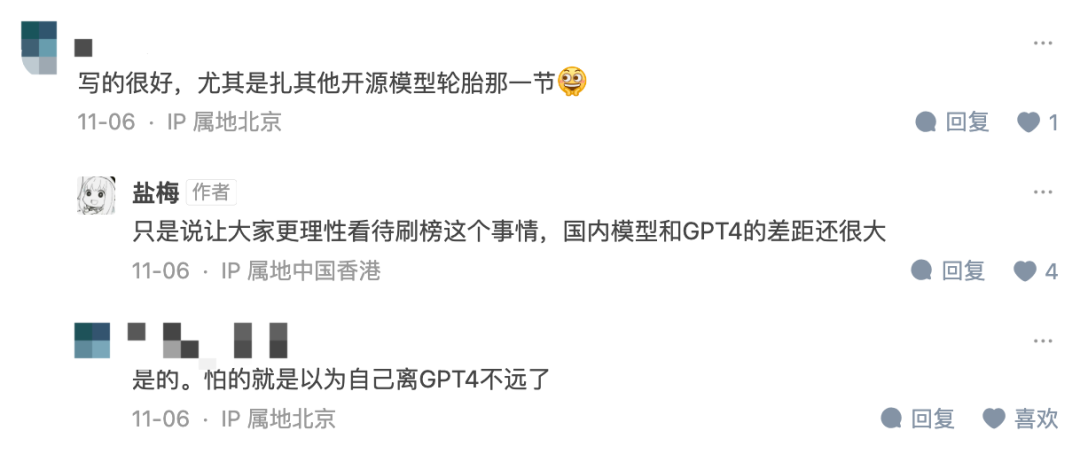
Picture: Screenshot from Zhihu article https://zhuanlan.zhihu.com/p/664985891
The problem of data pollution deserves attention
In fact, this is not a temporary phenomenon. Since the introduction of Benchmark, such problems have occurred from time to time, as the title of a very ironic article on arXiv in September this year pointed out: Pretraining on the Test Set Is All You Need.
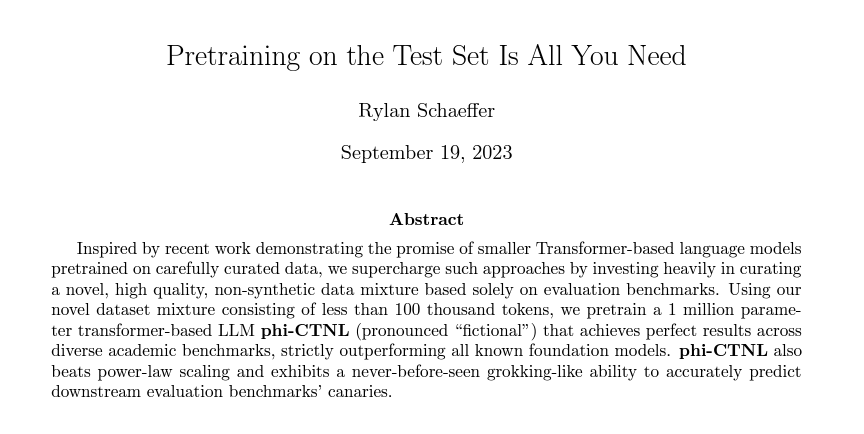
In addition, a recent formal study by Renmin University and the University of Illinois at Urbana-Champaign also pointed out problems in large model evaluation. The title is very eye-catching "Don't Make Your LLM an Evaluation Benchmark Cheater":

Paper link: https://arxiv.org/abs/ 2311.01964
The paper points out that the current hot field of large models has made people care about the ranking of benchmarks, but its fairness and reliability are being questioned. The main issue is data contamination and leakage, which may be triggered unintentionally because we may not know the future evaluation data set when preparing the pre-training corpus. For example, GPT-3 found that the pre-training corpus contained the Children's Book Test data set, and the LLaMA-2 paper mentioned extracting contextual web content from the BoolQ data set.
Data sets require a lot of effort from many people to collect, organize and label. If a high-quality data set is good enough to be used for evaluation, it may naturally be used by other people. Used for training large models.
On the other hand, when evaluating using existing benchmarks, the results for the large models we evaluated were mostly obtained by running on a local server or through API calls. During this process, any improper means (such as data contamination) that could lead to abnormal improvements in assessment performance were not rigorously examined.
What’s worse is that the detailed composition of the training corpus (such as data sources) is often regarded as the core “secret” of existing large models. This makes it more difficult to explore the problem of data pollution.
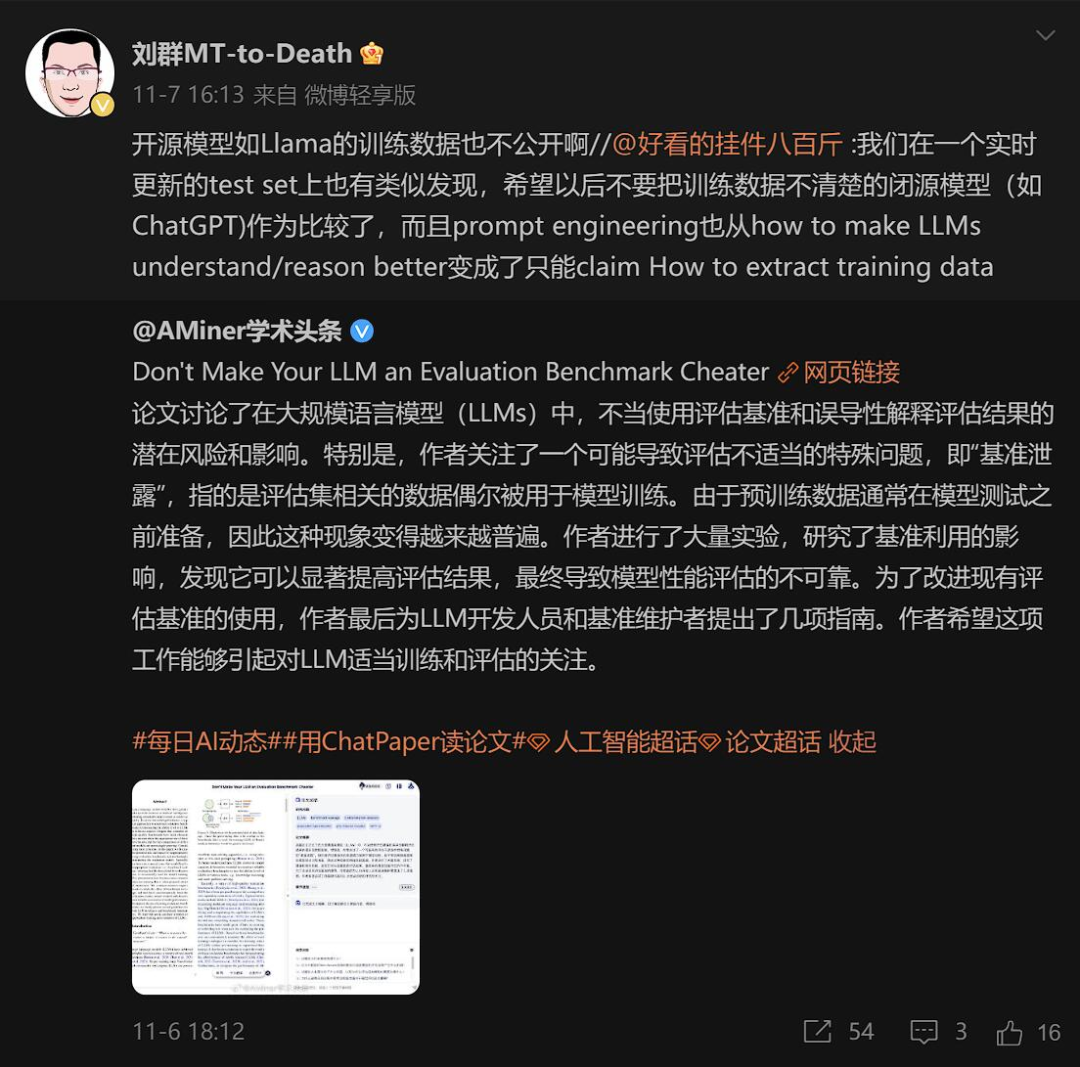
In other words, the amount of excellent data is limited, and on many test sets, GPT-4 and Llama-2 are not necessarily the best. no problem. For example, GSM8K was mentioned in the first paper, and GPT-4 mentioned using its training set in the official technical report.
Don’t you say that data is very important? Then, will the performance of a large model that uses “real questions” become better because the training data is better? the answer is negative.
Researchers have experimentally found that benchmark leaks can cause large models to run exaggerated results: for example, a 1.3B model can surpass a model 10 times the size on some tasks. But the side effect is that if we only use this leaked data to fine-tune or train the model, the performance of these large test-specific models on other normal testing tasks may be adversely affected.
Therefore, the author suggests that in the future, when researchers evaluate large models or study new technologies, they should:
- Use more benchmarks from different sources covering basic abilities (e.g. text generation) and advanced abilities (e.g. complex reasoning) to fully assess LLM capabilities.
- When using an evaluation benchmark, it is important to perform data sanitization checks between the pre-training data and any related data (such as training and test sets). In addition, the pollution analysis results for the assessment baseline need to be reported as a reference. If possible, it is recommended to make the detailed composition of the pre-training data public.
- It is recommended that diversified test prompts should be used to reduce the impact of prompt sensitivity. It also makes sense to perform contamination analysis between the baseline data and existing pre-training corpora to alert on any potential contamination risks. For the purpose of evaluation, it is recommended that each submission be accompanied by a special contamination analysis report.
Finally, I would like to say that fortunately, this issue has gradually attracted everyone's attention. Whether it is technical reports, paper research or community discussions, everyone has begun to pay attention to the "swiping the list" of large models. problem.
What are your opinions and effective suggestions on this?
The above is the detailed content of Is the big model taking shortcuts to 'beat the rankings'? The problem of data pollution deserves attention. For more information, please follow other related articles on the PHP Chinese website!
Related articles
See more- how to create sql database
- Which layer in the OSI reference model does the transport layer in the TCP/IP reference model correspond to?
- In the ISO/OSI reference model, what are the main functions of the network layer?
- In database design, what is the process of converting ER diagram into relational data model?
- What is the OSI model

